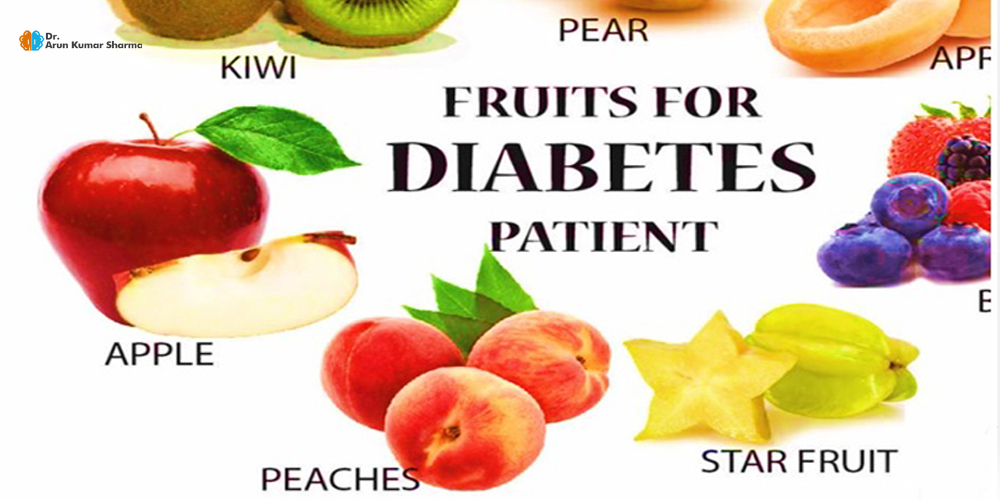
Are Fruits Forbidden in Diabetes?
As a neurologist I get to see and treat a lot of patients of Diabetes (high sugar disease).That may come as a surprise to the reader. Simply because I am not an Endocrinologist ,the doctors who are Diabetes experts.However, every diabetic patient, sooner or later does have to visit a neurologist on account of neuropathy .Diabetic neuropathy presents as pins and needles ,tingling, burning sensation in feet or hands and later proceeds to manifest as permanent numbness in the same parts. Numbness indicates almost irreversible damage to the involved nerves. Diabetic neuropathy also can cause paralysis of eye nerves causing double vision, blurring of eyesight,or drooping of an eyelid. Numbness of feet can lead to impaired wound healing or gangrene of toes, occasionally necessitating amputation of a toe. Therefore,whether or not your endocrinologist refers you to a neurologist ,you must see one whenever you feel the symptoms of neuropathy .In some cases of diabetes ,neuropathy may even precede the declaration of diabetes by your family doctor. Now coming to the topic of fruits,let us know which fruits are permitted in diabetes, albeit in moderation,since all fruits contain a form of sugar called fructose.Eating fruit is a delicious way to satisfy hunger and meet daily nutritional needs. However, most fruits contain sugar. This has raised questions about whether fruits are suitable for people who have diabetes. Diabetes is a chronic but manageable condition in which the body struggles to control the levels of blood sugar. Is fruit dangerous for people with diabetes? This article will suggest fruits to eat and avoid if you have diabetes, as well as examining the relationship between fruit and blood sugar. The American Diabetes Association (ADA) advises that any fruit is fine to eat for a person with diabetes, so long as that person is not allergic to a particular fruit. People with diabetes should eat processed foods sparingly or avoid them completely. The body absorbs processed fruits more rapidly, leading to higher blood sugar levels. Processing fruits also removes or reduces levels of certain key nutrients, including vitamins and fiber.
The National Institute of Diabetic and Digestive and Kidney Diseases (NIDDK) recommends that people with diabetes should avoid fruit juices or canned fruits with added sugar.Fruit blends like smoothies also have high sugar content and are more rapidly absorbed leading to higher spikes in blood sugar.
What is the glycemic index?
For a person with diabetes, one way to select safe and suitable fruits and other high-carbohydrate foods is to check the glycemic index (GI). GI is a rating of foods on a scale from 1 to 100. The score indicates how quickly the food item may raise blood sugar levels. High GI foods are absorbed faster than medium or low GI foods. Glycemic load (GL) takes into account the GI of a food plus the number of carbohydrates in a serving. GL may be a more accurate way of assessing how food affects blood sugar management over time. Low-GI and low-GL foods are better for helping control blood sugar levels. People may be surprised to learn that many fruits have a low glycemic index. People digest starchy vegetables, such as potatoes and grains, more rapidly, so these have a higher GI index. The longer a carbohydrate-rich food is cooked, the higher the GI value. Fat, fiber content, and cooling carbohydrates after they have been transformed into resistant starches via cooking can all dramatically lower GI values.
List of fruits for diabetesBelow is a list of fruits divided by GI index, asreported by the U.S. Department of Agriculture (USDA) :-
Low GI and GL fruitsSome fruits have a GI of under 55 and a GL under 10, including.
- apples
- avocados
- bananas
- berries
- cherries
- grapefruit
- grapes
- kiwi fruit
- nectarines
- orange
- peaches
- pears
- plums
- strawberries
A fruit with a GI of between 56 and 69 is considered to be a medium-GI food. All fruits listed below still have GL levels under 10.
- honeydew melon
- figs
- papayas
- Pineapples
Fruits with a GI higher than 70 are high-GI and a GL of greater than 20 is high GL. While these are safe to eat with diabetes, it is important to eat larger quantities of lower-GI fruits instead.
- dates (high GL)
- watermelon (low GL)
Medium and High GI fruits should be avoided by diabetics .It can’t be overemphasized that moderation in consumption of fruits is strongly advised.


